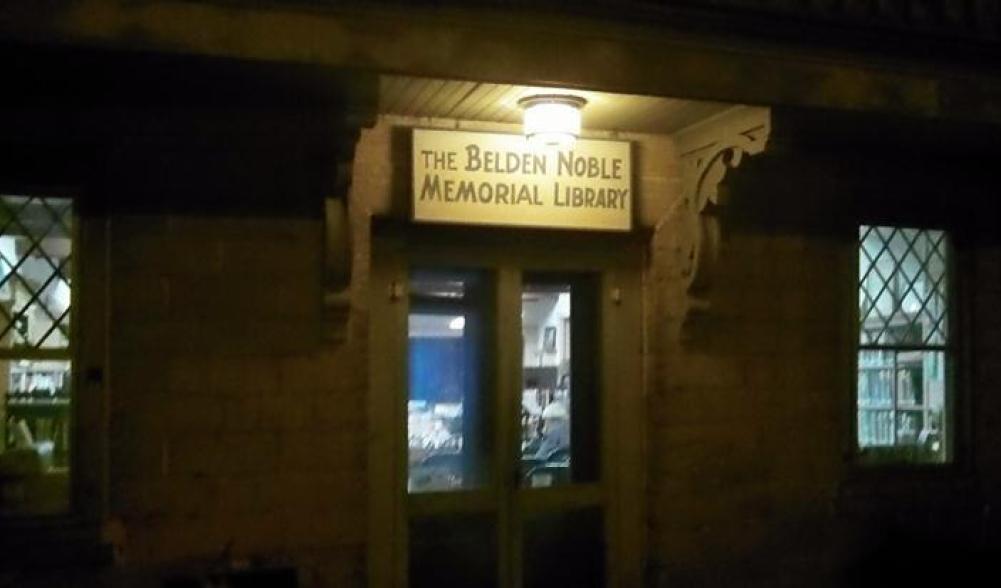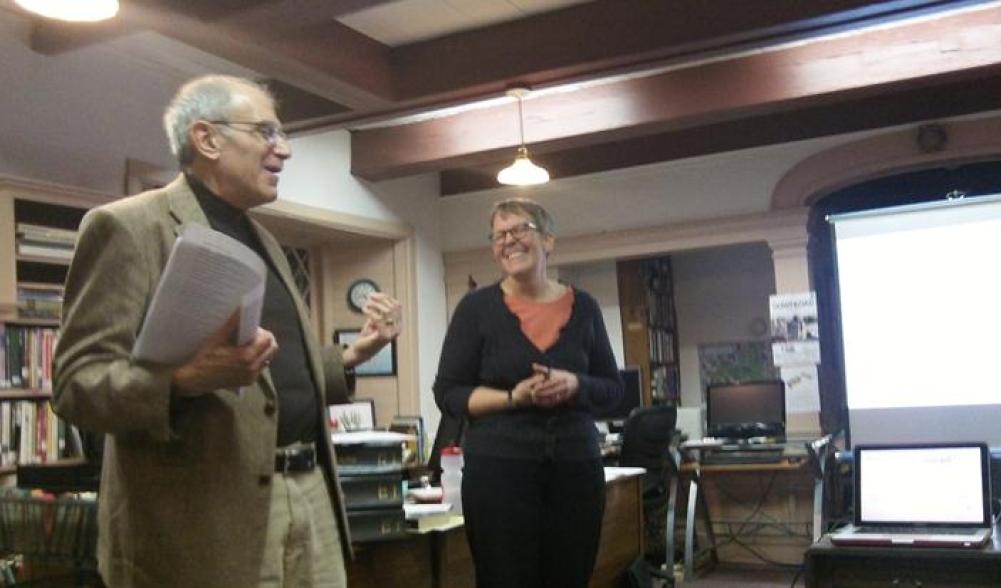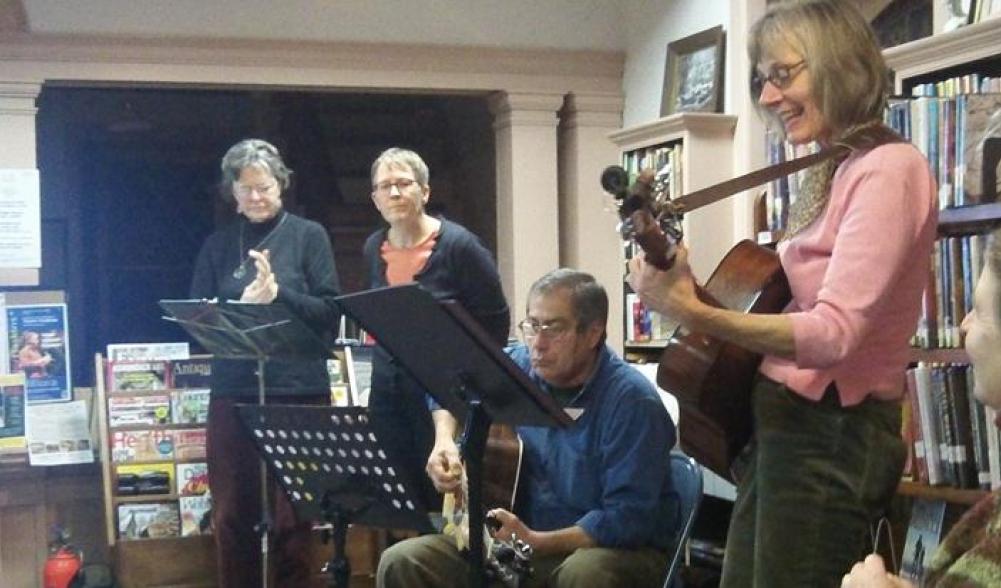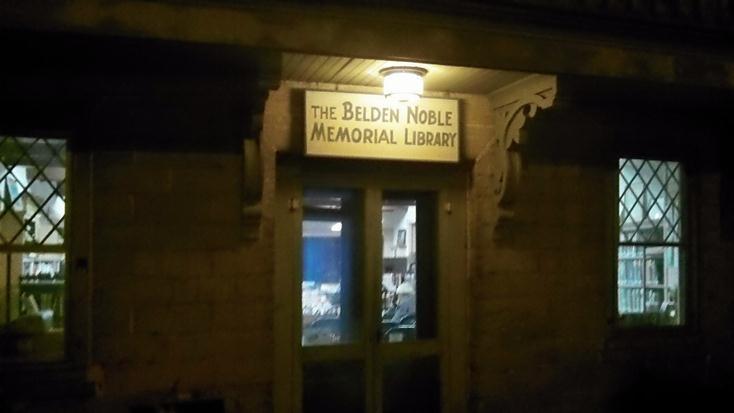
Before the evening is over there will be more than 20 people crowded into this little library to listen to and sing along with Mary-Nell Bockman and her singing group known as The Wannabees.
According to Mary-Nell, singing has been part of the conflicts and movements for change throughout American history. Protest songs are linked to sweeping social movement such as the abolition of slavery, the rise of organized labor, the rural Grange movement, the civil rights struggle, opposition to the Vietnam War, and other specific topical events that have stirred the masses.
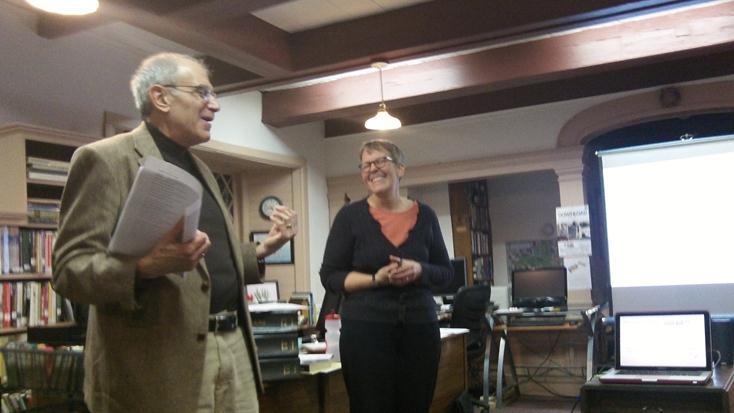
Library Director Tom Mangano introduces the program and the singing group. It seems this is the second incarnation of "Singing for Change;" the first was in Whallonsburg in October and it went over so well that the library in Essex asked for an encore presentation.
Mary-Nell uses a power point presentation to illustrate this history as well as accompaniment from the Wannabees. Her program is both powerful and personal. One of the first examples she gives us is that of a sanitation worker strike in Atlanta in 1970 with the song, "Which Side Are You On" playing underneath. She tells us she was 11 years old when she went to that protest with her mom. I am surprised to learn that her introduction to this genre was not through the music room door but wheeled through the protest movement. She tells us that she's not from a musical family but a protester family.
Mary-Nell takes us back to John Adams'diaries and "The Liberty Song"--its roots and offshoots. We learn about the rise of group singing in the 1830s, the anti-slavery songs, and about the birth of songsters and how soldiers carried them in their pockets and spread the songs far and wide.
We learn the influence songs had on the Women's Rights Movement and the Temperance Movement and of the Hutchinson Family and their contribution to this rich genre. We use the presenter's handouts to sing along with a version of "John Brown's Body" and find out more about the origins and evolution of that song.
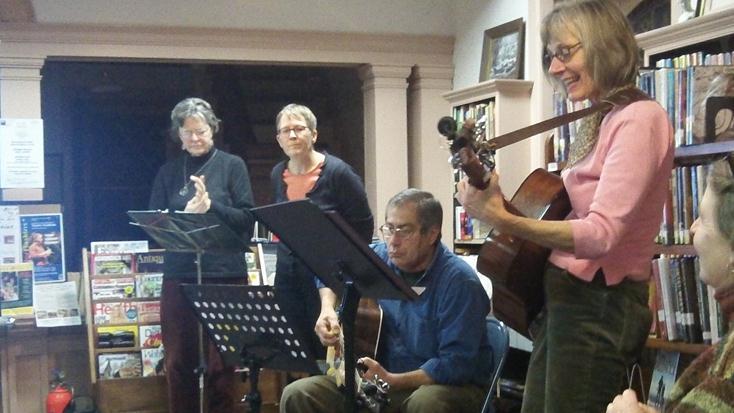
After the program we have a brief discussion about environmental songs. Mary-Nell mentions Bonnie Raitt and some of us are interested to learn more about contemporary environmental protest songs.
It is an inspiring evening and the warmth in the room gives us the energy we need to go out and face this frigid winter night.
Our little Adirondack libraries offer a wonderful assortment of arts throughout the year. The Essex library has more planned over the next few months including Poetry Open Mike and Acoustic Music Jams. Click through to the web site to see what else is in store.
For other arts events in the North Country click through to Lake Placid events.
Kathleen Recchia has been enjoying the arts in the Adirondacks for about 20 years—both as observer and participant (acting, directing, and producing). She also enjoys cross-country skiing, swimming, juggling, and hosting visitors to the area at her bed & breakfast in Jay.


